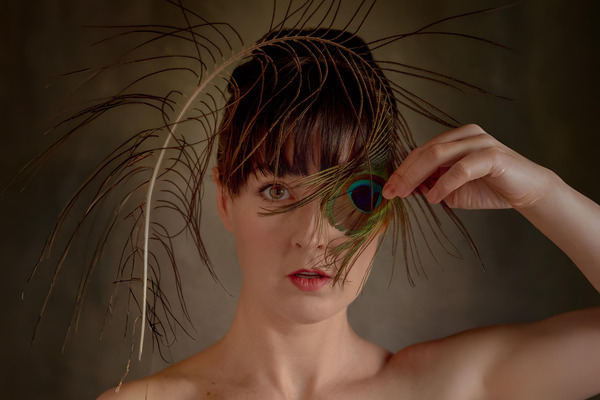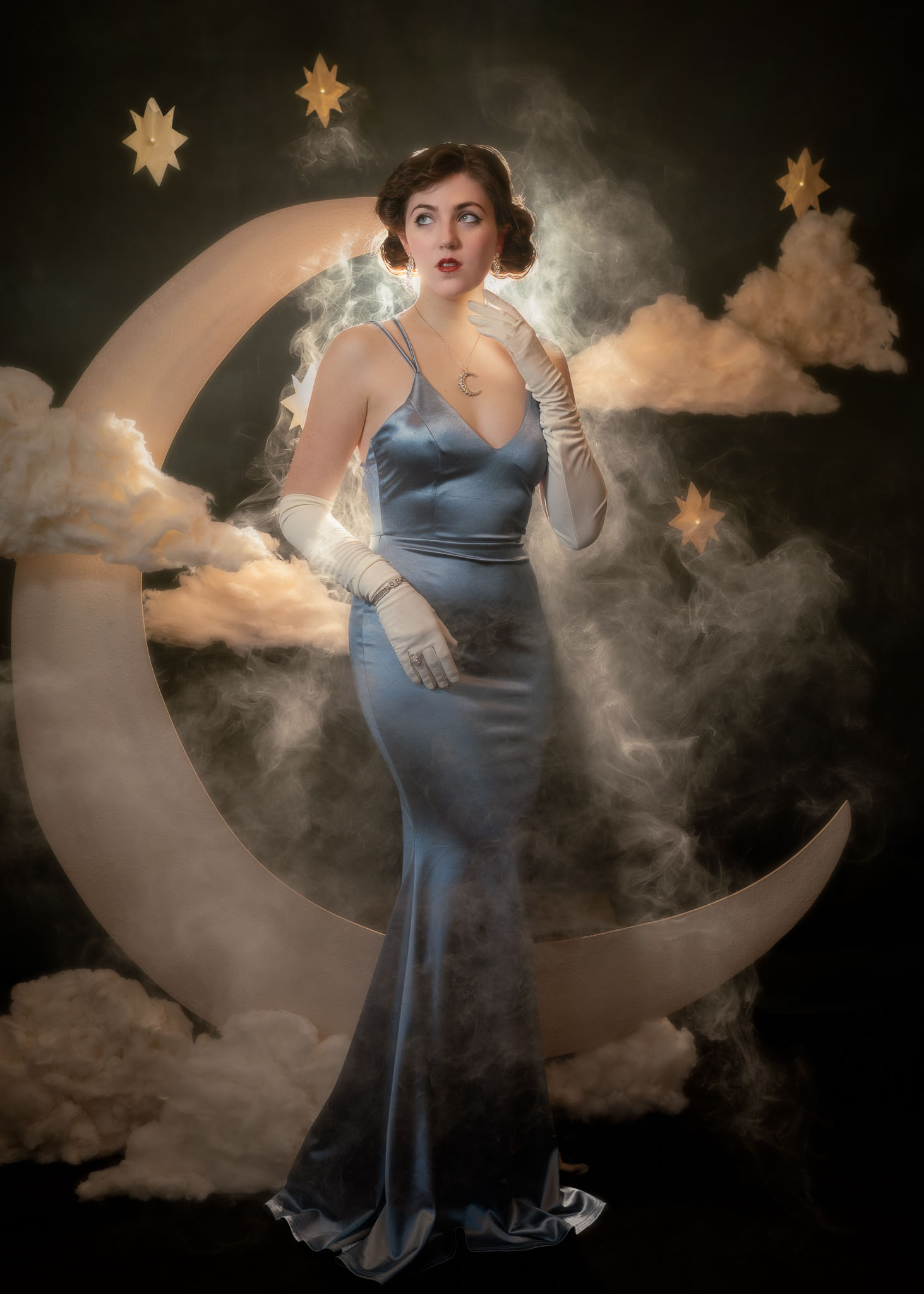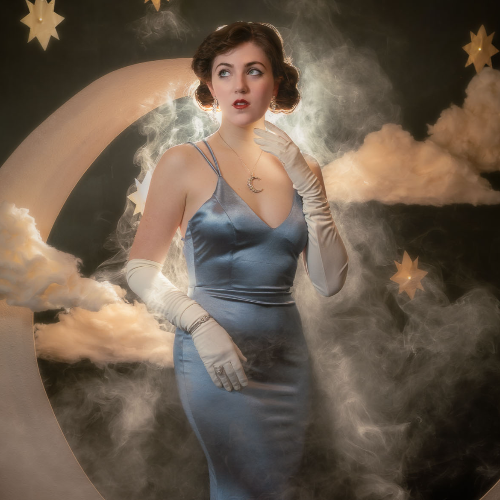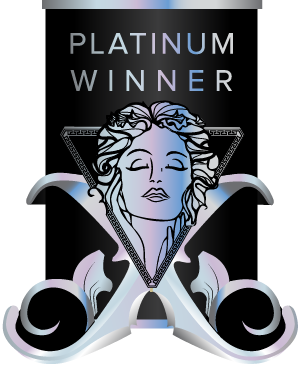
Interview
Zoe Smythe
Zoe Smythe Photography, United States
Zoe Smythe spent over a decade as a designer in New York before turning to photography as a more personal, immediate creative outlet. Drawing from her fashion background, she crafts timeless, emotionally layered portraits—shaping light, styling details, and weaving storytelling into every frame.
1 Congratulations on winning in the MUSE Photography Awards! Can you share a little about yourself, what inspired you to pursue photography, and how has your journey evolved since your first shot?
Thank you! Winning the MUSE Photography Awards is such an incredible honor. I grew up in a small town in Western Canada, studied fashion design in Vancouver, and spent over a decade working as a designer in New York before shifting my focus to photography. That transition happened naturally after the birth of my first child—I wanted a creative outlet that felt more personal, more immediate. Photography became the perfect medium to channel my love of storytelling, design, and craftsmanship. My background in fashion heavily influences my work. I love playing with fabrics, textures, and accessories to create customized, meaningful portraits that reflect my clients' personalities. Whether it’s a fine art editorial piece, an intimate portrait, or wedding photography, I approach every session with a designer’s eye—shaping light, styling details, and ensuring each image has depth, context, and emotion. My goal is always to create something timeless, something that feels both curated and effortless.
2 Can you share the story or inspiration behind your award-winning piece? How does winning this award make you feel about your journey in photography?
This photoshoot was inspired by the enchanting paper moon portraits of the early 20th century, a nod to the whimsy and elegance of that era. My narrative portraits are always a co-creation with each client, and this series was no different—we designed a dreamlike set together, drawing on late Victorian and early Art Deco influences. A striking five-foot crescent moon became the centerpiece, surrounded by soft clouds and twinkling stars to create an atmosphere of nostalgia and magic. This collaboration was truly a three-part co-creation—the client, myself, and the artistry of a local antique jewelry store, which provided exquisite vintage diamond Art Deco pieces to elevate the styling. Every detail was intentional. The entire set was designed and customized for the shoot: the moon was hand-constructed and painted, the clouds carefully shaped, the stars lit from within to create a soft glow, and a hand-painted backdrop brought depth and texture. We even introduced a subtle layer of smoke to enhance the ethereal mood. Bringing this vision to life was an immersive creative process, and winning this award is an affirmation of the magic that happens when collaboration, storytelling, and craftsmanship come together.
3 How do you decide which photo to submit for a competition?
This photo is from a recent photoshoot, and I was absolutely thrilled with how everything came together so beautifully. From the handcrafted set to the vintage Art Deco jewelry and the dreamy atmosphere we created, it felt like a perfect fusion of storytelling and style. When I saw the Fashion Photography – Vintage category, I knew this image belonged there. It embodied the essence of the era while remaining fresh and evocative—exactly what I strive for in my work.
4 What first made you pick up a camera?
I first picked up a camera as a way to capture the world around me, but it wasn’t until later that I realized photography could be a deeper form of storytelling. Growing up in a small town in Western Canada, I was surrounded by artists and makers, which sparked my lifelong love of creating. My background in fashion design honed my ability to craft visual narratives, but it was after the birth of my first child that I truly embraced photography as my creative medium. In the early days of the pandemic, with all my photography work postponed, I started staging elaborate portraits at night—blending fashion, storytelling, and hands-on artistry. I experimented with handcrafted sets, styled my children in imaginative scenes, and used photography as both a creative outlet and a way to make sense of the world around me. Without realizing it at the time, I was developing my signature approach: narrative portraiture as a co-creative experience. Photography allows me to communicate beyond words, to craft visual stories that feel both deeply personal and timeless. It’s a way to connect, to celebrate individuality, and to create something that resonates long after the moment has passed.
5 What’s your favorite type of photography, and why do you love it?
My favorite type of photography is any form that tells a story—whether it’s narrative, portrait, fine art, wedding, or commercial. What I love most about storytelling in photography is that it gives me the opportunity to authentically capture the essence of my clients. Each shoot is a unique collaboration where I get to understand their personality, experiences, and vision, and transform that into a visual narrative that reflects who they are. For me, it’s not just about the images themselves, but about what they communicate—the emotions, the context, the moment. Whether I’m photographing a couple on their wedding day, a commercial brand, or a fine art portrait, my focus is always on capturing something meaningful, authentic, and true to the individual or story. It’s this connection that makes every photo feel timeless and personal.
6 What’s your go-to camera setup, and why does it work best for your projects? What’s your favorite feature?
My go-to camera setup always revolves around light—it's the most important element in my work. I almost always use multiple off-camera flashes to control and shape the light in a way that enhances the mood and creates the specific look I'm after. Whether it's soft and ethereal or bold and dramatic, light is what helps bring my creative vision to life. The flexibility of using off-camera flashes allows me to shape the light precisely, whether I’m lighting a subject in a portrait, crafting a narrative scene, or adding depth to a commercial shot. I can control the direction, intensity, and softness of the light to suit the mood I want to create. My favorite feature of this setup is the ability to manipulate light to not only highlight the subject but also to sculpt the environment around them, ensuring that every element in the frame feels intentional and cohesive.
7 If someone looked at your work, what’s the one thing you’d want them to feel?
When someone looks at my work, I want them to feel a sense of whimsy—a spark of imagination that transports them into a fantastical world. I love when an image makes you pause, and then your mind starts weaving its own story. It’s like the photo becomes a starting point for your own imagination, inviting you to dream up the story behind the scene, to wonder about the characters and their journey. The beauty of whimsical photography is that it doesn’t just show you a moment; it opens up a door to possibilities, letting you step into a world where anything can happen. It’s not just about what’s in the frame, but about what your mind envisions beyond it.
8 What was the most challenging part of capturing your winning shot?
The most challenging part of capturing my winning shot wasn’t the creative vision—it was the meticulous setup. Once we had the concept in place, everything else came together quite seamlessly. However, the actual construction of the scene took hours, and the hardest part was making sure all the clouds and stars were aligned perfectly. I have this strong desire to do almost everything in-camera, so getting the set just right became a crucial part of the process. It took patience and a keen eye for detail, but once everything fell into place, it was totally worth it to see the vision come to life.
9 Who or what has been your biggest influence in photography?
My biggest influences in photography are inspired by my background in fashion and my love for art and fashion history. These interests shape how I approach each shoot, blending timeless aesthetics with a fresh perspective. Equally influential are my clients and their stories. Every person I work with brings a new energy and narrative, inspiring me to craft portraits that reflect their essence and capture something deeply personal. The fusion of my artistic background and the unique stories my clients share drives my photography style.
10 What message would you share to inspire photographers to participate in photography awards, and what advice would you give to help them excel in the competition?
To photographers considering entering competitions, I’d say focus on persistence, community, and finding your voice. Persistence is essential—creative confidence builds with consistent practice. Personal projects are a great way to experiment, learn, and perfect your craft. They give you the freedom to explore different styles, techniques, and concepts without the pressure of a client’s expectations. These projects are where you truly find what inspires you as a photographer and begin to develop your unique style. Equally important is community. Photography can be isolating, but connecting with others who inspire and support you makes the journey more fulfilling. Surrounding yourself with like-minded creatives can provide new perspectives, constructive feedback, and a sense of camaraderie that fuels your growth. Through persistence and a supportive community, you’ll not only improve your craft but also discover your authentic voice as a photographer.
11 What’s one piece of advice for someone just starting in photography?
My advice for someone just starting out in photography is simple: keep at it. Push yourself to create as much as possible, and don’t be discouraged if it feels like you’re not gaining momentum. Understand your creative process, and trust that growth comes with consistent effort. Most importantly, connect with other photographers. Photography can feel isolating, especially in the beginning. Some may see others as competition, but it’s important to let go of that mindset. Fellow photographers are part of your creative community—a valuable source of support, feedback, and inspiration. No two photographers will capture the same scene the same way, so there’s always room for collaboration and learning from one another.
12 What role do editing and post-processing play in your creative workflow?
Editing and post-processing play a key role in refining my creative vision. I aim to do as much as possible in-camera, focusing on lighting, composition, and set design to capture the mood I’m after. However, post-processing is where I bring my images to life and perfect the whimsical, fantasy-inspired, painterly look I love. For example, in one recent shoot, the stars and clouds were suspended from the ceiling with fishing wire and thread. My editing process involved removing those threads to maintain the dreamlike quality of the image. The editing stage is about cleaning up the photo and making subtle adjustments to enhance the atmosphere and deliver the final, polished version of the vision I’ve created.
13 How do you see technology, like AI, influencing the future of photography and your own approach?
I have a personal compulsion to do as much as possible in-camera, so I don’t rely on AI heavily at this point. I prefer to create and capture my images with as much authenticity and hands-on creativity as I can. That said, I do appreciate how AI, like Lightroom’s portrait retouching tools, can enhance the editing process. It's incredibly convenient to smooth skin and make subtle touch-ups with the touch of a button. As technology evolves, I see it playing a larger role in photography, but I’ll always lean toward maintaining that balance of traditional, in-camera work combined with AI tools that support the final touches and elevate the overall look of the image.
14 If you could photograph anything or anyone in the world, what would it be?
If I could photograph anything or anyone in the world, I would love to photograph people in moments of true self-expression—those times when someone feels fully seen and connected to their own story. It could be anyone, anywhere, but I’m particularly drawn to capturing subjects who embrace vulnerability and authenticity. The idea of creating a narrative through photography that tells a deeper, personal story is what excites me most. In terms of a dream subject, I would love to photograph someone with a rich cultural or historical background, someone who carries a unique story that can be beautifully woven into the image. I’m always inspired by history, fashion, and the subtle details that tell a person’s life story, so blending these elements into a powerful portrait would be a dream come true.


